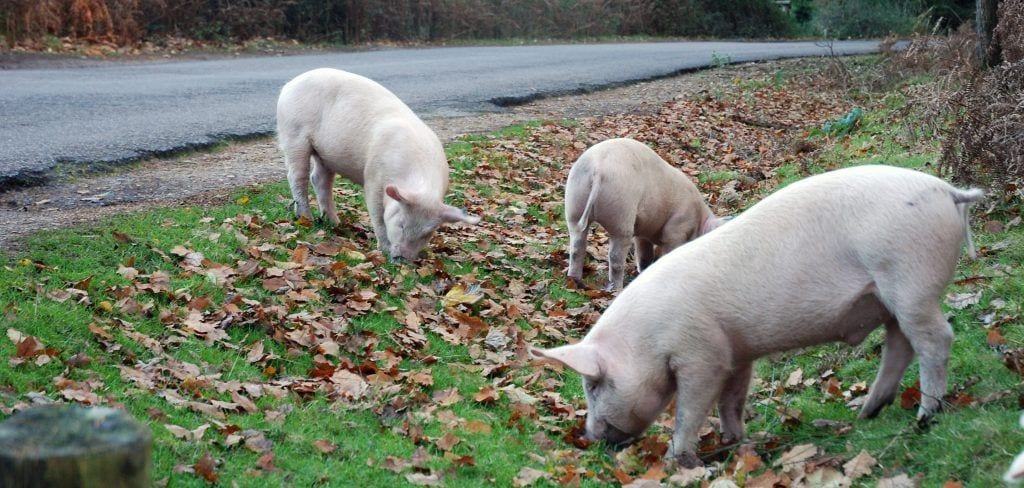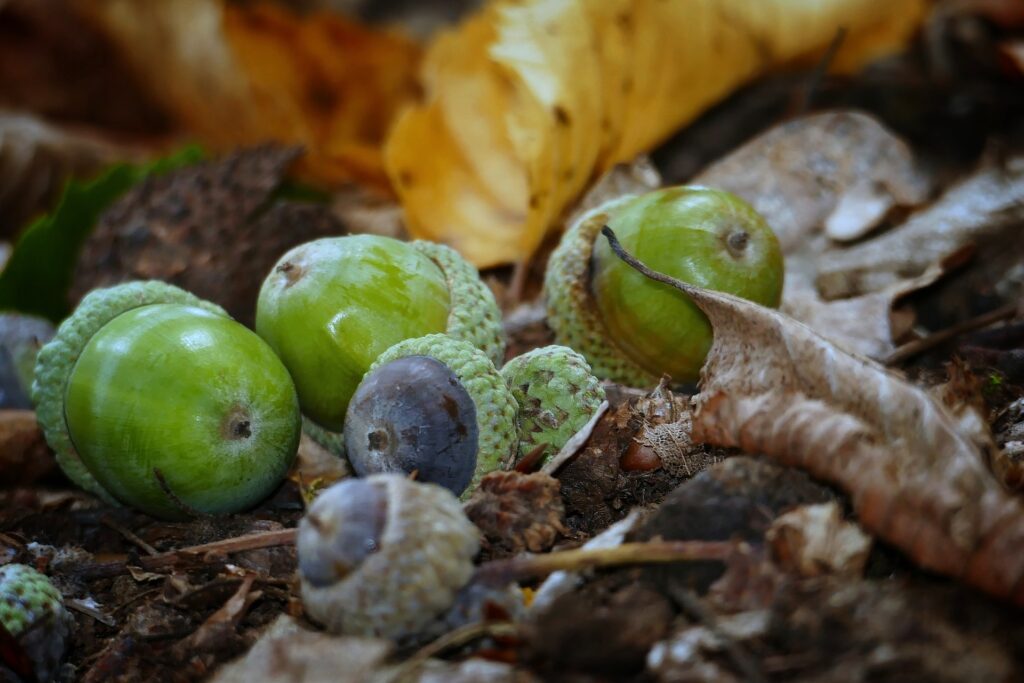Pannage Season (Pigs in The New Forest)

It’s that lovely time of year before Autumn hits. The “Common of Mast” begins, one of only six ancient commoners rights accorded from the time of William the Conqueror. This ancient practise is also known as Pannage. As the season begins, we see domestic pigs such as Tamworth and Gloucester Old Spot and their piglets, released onto the New Forest by their owners.
What is pannage?
Pannage is otherwise known as the ‘release of domestic pigs’ in the New Forest. Pannage is no longer carried out in many areas, but can still be observed every year, here in the New Forest. Following the summer at the beginning of the autumn after the acorns, beech mast, chestnuts and other nuts have fallen, the pigs are released and work their way through the forest hoovering them from the forest floor. This practise is believed to be unique to the UK and is very special.
Why are pigs released?
This is for the benefit of the ponies and other forest livestock. These newly fallen green acorns and chestnuts can be poisonous to them if eaten in large quantities. Pigs ensure that the forest floor is safer for them to graze on, as pigs are not harmed in the same way. This is because they can cleverly crack green acorns like a nut, when in search of the kernel and know to discard the harmful skin.
Thanks to the tireless work of the pigs gobbling up all of the acorns, other animals grazing on the forest can be harmed less often by consuming the fallen nuts.
Where do you find the pigs?
You can usually find the pigs roaming the forest floors from mid-September, usually when the acorns begin to drop, but it is based on seasonal variations. The 2023 Pannage season starts on the 11th of September this year. The season will last for 60 days or until all of the acorns have been removed from the forest floor.
Every year Pannage dates are decided each year by the Court of Verderers. The Verderers sit in their own ancient courthouse based in Lyndhurst, the New Forest’s “capital” alongside members of the Forestry Commission.
Common places to find them are amongst the ancient oak trees. Such as Bolderwood and Knightwood and they have even been known to have a root through the local villages. We have even had them foraging in Brockenhurst around the roadside by the hotel in search of irresistible fallen delights.

Keeping the pigs under control
The pigs are not completely wild. Like other free-roaming animals on the forest, all belong to a commoner to whom they return.
We like to nickname them “punk pigs”. Each piggy for pannage has an ear tag and a ring through its nose. This is to prevent excessive damage when they are rooting around the forest floor and denotes their ownership.
Tracking down pigs for removal, however, is not always easy. Some will travel many miles in the quest for food or a mate. Commoners depend on an intimate knowledge of both the area and the pigs, to recall their animals.
Be Forest friendly…Keep your distance
Pigs are very photogenic and we encourage you to admire them from a distance. Please do not approach them or touch them, especially their piglets (we know they are cute). Like all forest animals, their mums can also be aggressive and bite you if they feel threatened.
Please also keep your dogs under close control and on a lead if you come across them when out exploring.
Be a respectful eco tourist and follow the New Forest Code.
Seasonal changes
It’s the perfect time of year to admire the seasonal changes in the forest. Especially if you can catch a glimpse of the roaming pigs in Pannage season! Book your autumnal break, you are in for a treat as the autumnal colours are stunning!
We have plenty of walking and cycling maps at the hotel. We welcome all of our guests to get out and about exploring for the day…. you never know, you might be one of the rare few to witness the pigs in the forest! Click here to browse our rooms and book just in time for Pannage season.
keyboard_arrow_left Back

 Check Our WiFi
Check Our WiFi